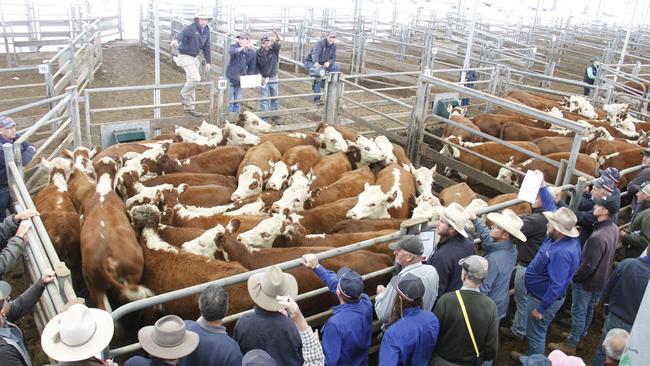Prices lift marginally despite yardings and slaughter lift
Cattle yardings are up and so are prices for some categories of cattle. See what’s driving the rise.
Cattle prices have defied higher slaughter throughput and bigger yardings with portions of the market lifting in the past week.
While the benchmark Eastern Young Cattle Indicator closed on Monday down 30c/kg carcass price week-on-week at 762c/kg, other indicators have risen with the biggest liveweight price gains of 29c/kg for medium steers, while heavy steers rose 23c/kg.
Meat and Livestock Australia senior market information analyst Ripley Atkinson said Victorian yardings were up 34 per cent and NSW were 22 per cent up so far this year.
But nationally, total yardings were on par with last year due to smaller offerings in Queensland and Western Australia.
Mr Atkinson said MLA did not predict prices but in its cattle projections released late last month, industry analysts had forecast the EYCI would rise 6 per cent to 811c/kg carcass weight.
“This would be a 6 per cent or 49c/kg increase on the current price today – indicating analysts have forecast improved demand and prices for young cattle out to June 30,” Mr Atkinson said.
He said the same analysts predicted a lift in feeder steer prices, which could rise above their current levels of 394c/kg to 420c/kg.

But much of the current speculation about cattle prices centres around numbers and whether the processing industry can physically cope with the increased offerings, and the ability to sell beef.
Mercardo analyst Adrian Ladaniwskyj said slaughter rates had been significantly higher year on year.
“The kill rate for this (last) week was 82,000 which is about 29 per cent above where we were last year,” Mr Ladaniwskyj said.
“For every week this year, we have been averaging 60 per cent above last year’s volumes, so it could be said that processors are on a roll.
“Word is that the labour problems have abated somewhat (particularly in Queensland), but it will be another six months or more until the new hires are fully trained and productive.”
Mr Ladaniwskyj said the expected ramp-up in the supply of cattle in the coming months “remains an area of concern”.
”(But) Reports of a solid contingent of restockers attending saleyards in the north (northern NSW and southern Queensland) suggest that there may be some pent-up demand lurking,” he said.




